Yinka Shonibare
A Tale of Today
March 2, 2019 through September 29, 2019
The Richard H. Driehaus Museum
40 East Erie Street
Chicago, Illinois, USA, 606011
Though a bit foggy, I’m certain my initial encounter with the work of Yinka Shonibare was at the Cooper-Hewitt Museum in New York City a couple decades ago. I was in the city doing art drops and my Sandy wanted to drag me up to a fashion and design exhibition she had read about in one of those trashy English papers she finds so much enjoyment in. I vocalized little interest in treking up to the west side. My emphasis was to drop art in parks and see “real” art, painting and sculpture, on the lower east side. My lady got her way and we took the #4 train up to 86th street . What was found there was the intersection of the post-colonial imagery and theory I first encountered in graduate seminars coupled with precise artisanship with a new inspired colorful palette. The show, though small in scale, mesmerized and shifted my attention. Prior to this I had little knowledge or interest in fiber arts or art voices that were not western. Shonibare was the impetus for changing this perception.
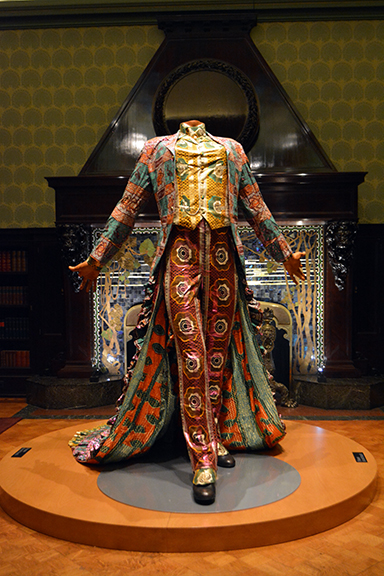
at the Richard H. Driehaus Museum, Chicago, 2019
Presently on view at the Driehaus is that cyclic engagement I rarely encounter. I’ve experienced most works presented previously. On view is a cross section of post-colonial critiques produced over the past three decades previously shown at a variety of traditional exhibition spaces. Though the Driehaus is a museum, it is not this and the setting feels highly relevant to this British/Nigerian artist’s production and dissemination. Time and memory are integral when considering the content and message. Shonibare understands history. This is evident in the accompanying video for the exhibition. Shonibare is articulate in his conveyance of motivation and the works produced. Simply put, he’s a charming entity, lacking verbose jargon, that you will want to listen to intently.
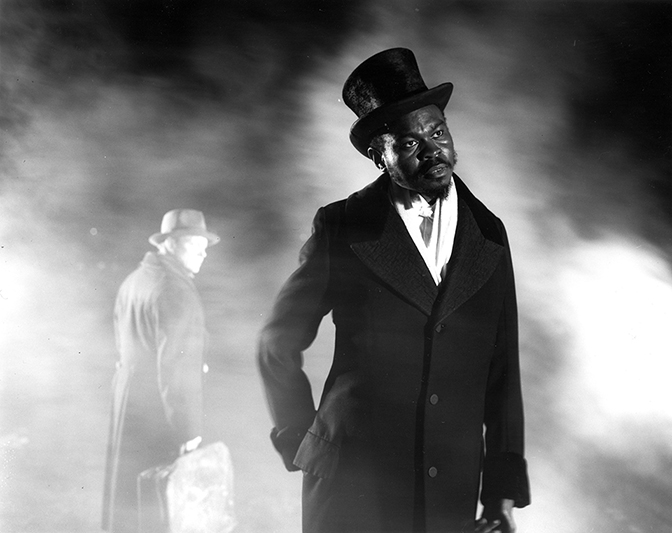
Image Courtesy of James Cohan, New York.
The artworks are defined by their relevance to time and present day art production. Shonibare exercises an adept style that is up-to-date while segueing through precarious terrain. Bold statements that address our ongoing socio-economic paradigm are present, yet in Shonibare’s tactful expression they seem subdued. This subtleness appears to dilute the message, but does not render the voice as entirely impotent. This observation can be seen best in the series, Dorian Gray, 2001, based upon the gothic novel by Oscar Wilde set in the Victorian era. Wilde’s sense of tragedy does not feel fully formed via Shonibare. You are presented with a sequence of large overly staged black-and-white photographs. The images feel more like production stills for a film in an almost “campy” tone. As is common with subsequent attempts in tableaux photography, Shonibari’s strategies and production feel a bit over-baked here. For me, the more interesting investigations reside in his beautifully conceived 3-D fashion inspired sculptural pieces and earlier photography series, Diary of a Victorian Dandy, 1998. These works seem to have held up a bit more in terms of a timely reading in the present.
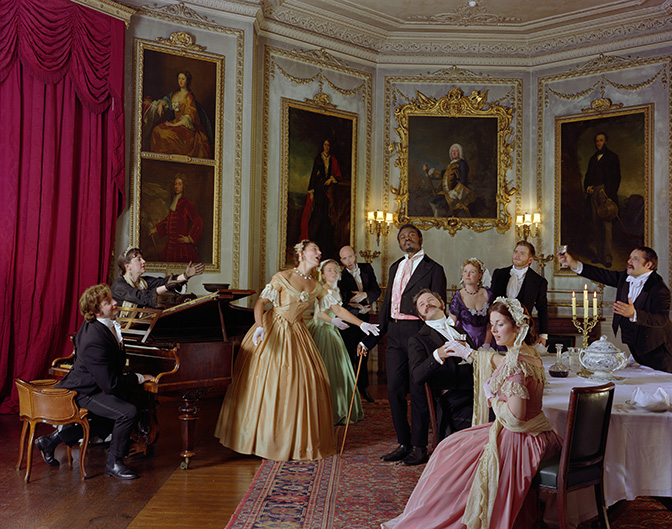
The Collection of John & Amy Phelan. © Yinka Shonibare CBE.
Image Courtesy of James Cohan, New York.
In contrast to the Dorian Gray series, Diary of a Victorian Dandy, still feels groundbreaking. Yes, there is an overwrought excessiveness in the imagery, but this is reflective of the content. Shonibare, a black man, is surrounded by white entourage, fawning and swooning at his character. The cast, dressed in Victorian attire are set in opulent rooms amplify the division of class and race. Based on William Hogath’s A Rake’s Progress, 1733-35, one is forced to address our repetitive nature through his questioning and rewriting of history. In this photography series, Shonibare takes on the central role in illustrating the reckless life and selfish choices of Tom Rakewell that eventually led to his ill fate. In this reintroduction I am reminded of a visit to the Sir John Soane Museum in London in 2001. Hogarth’s prints were stored in a large cabinet that opened to allow the visitor to view the series of works in pairings. Now, I see meddlesome parallels that are informed by the narrative and setting. Memory is a curious thing, always shifting and changing, yet specific tenets hold clear.
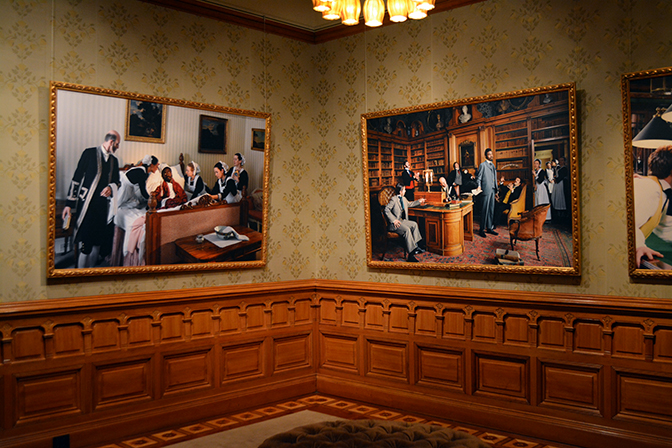
at the Richard H. Driehaus Museum, Chicago, 2019
If you have not made a visit to the Driehaus Museum, this is an ideal time. This multi-disciplinary exhibition set in the highly ornate interior of the Driehaus, one can locate varied vantage points for contemplation in viewing the works of one of today’s most relevant artists. Though not described as a survey, this is certainly an important cross-section of the artist’s output. There are evident socio-political currents to digest that comment upon our post-colonial era. The depth of these materials reside in one’s willingness to search deeper. You need to be an active viewer when touring the exhibit. This is always key when encountering the works of Shonibare. I’m confident you will find something relevant and rewarding here. The exhibition is up through September 29, 2019. Go see this…you may not see this full cycle in the city or elsewhere again.
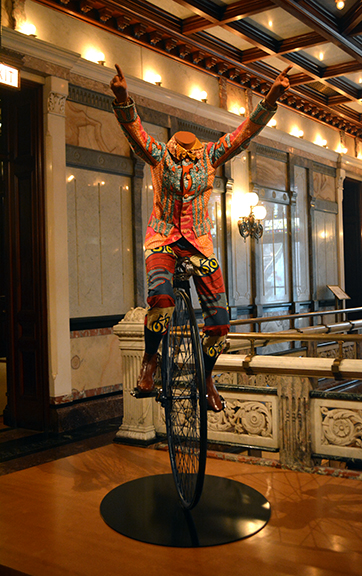
Additional images from Yinka Shonibare’s A Tale of Today at the Richard H. Driehaus Museum:
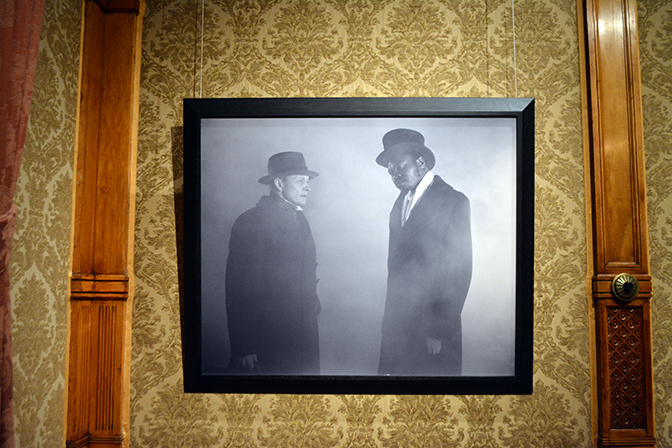
at the Richard H. Driehaus Museum, Chicago, 2019
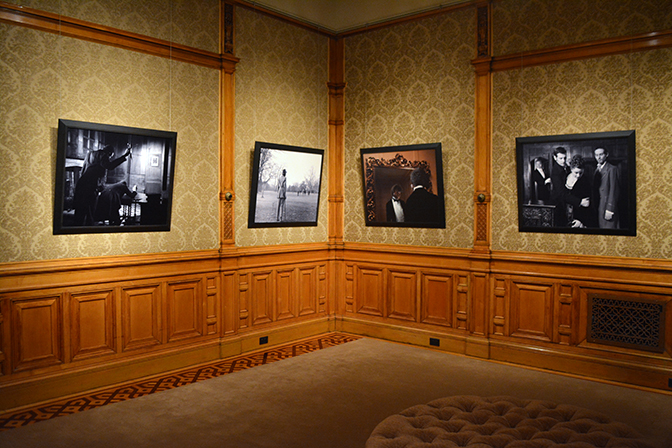
at the Richard H. Driehaus Museum, Chicago, 2019
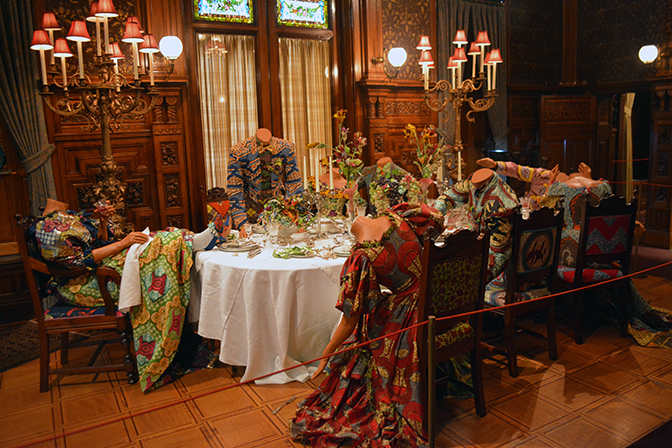
at the Richard H. Driehaus Museum, Chicago, 2019
For additional information on this exhibition and the work of Yinka Shonibare, please visit:
Driehaus Museum – http://driehausmuseum.org/
Yinka Shonibare – http://www.yinkashonibare.com/
Public Art Fund – https://www.publicartfund.org/view/exhibitions/6628_yinka_shonibare_mbe_wind_sculpture_sg_i
The Telegraph – https://www.telegraph.co.uk/culture/art/art-reviews/7760527/Yinka-Shonibares-Fourth-Plinth-review.html
The Guardian – https://www.theguardian.com/artanddesign/yinka-shonibare
Zeitz MOCAA – https://zeitzmocaa.museum/artists/yinka-shonibare/
Exhibition photographs and review by Chester Alamo-Costello


